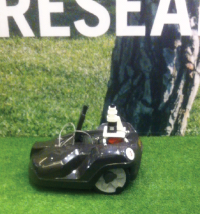Robust, low-cost, and long-term mapping and localization for outdoor robot navigation
Our goal is to build a navigation system for a robot to operate outdoors for extended periods of time. Many robots have successfully navigated indoors for long periods of time, but outdoor localization can be significantly more challenging than indoor localization: there is less local structure in the environment, the terrain is more challenging, and there are appearance changes caused by the tiime of day and the weather. Furthermore, maps used for outdoor navigation must be both efficient to search and robust to a wide range of conditions. Thus very few autonomous robots can operate outdoors for long periods of time using consumer-grade sensors.

This project will design, develop and implement the mapping and localization system for an outdoor mobile robot. The system will build a map of the environment and then reliably determine where the robot is in that environment by fusing data from its motors, wheels, and cameras. The project will also investigate the use of novel visual sensors - for example, infra-red cameras - to allow the robot to localize in the dark as well as during the day.
The system will be tested on Örebro University's Husqvarna Automower robotic platform, in collaboration with the R&D department at Husqvarna Research Corporation. This platform has inbuilt security and re-charging capability so can be left to run independently long-term and provides the opportunity to test the robot's mapping and localization over days or even weeks.
Contact: Stephanie Lowry
